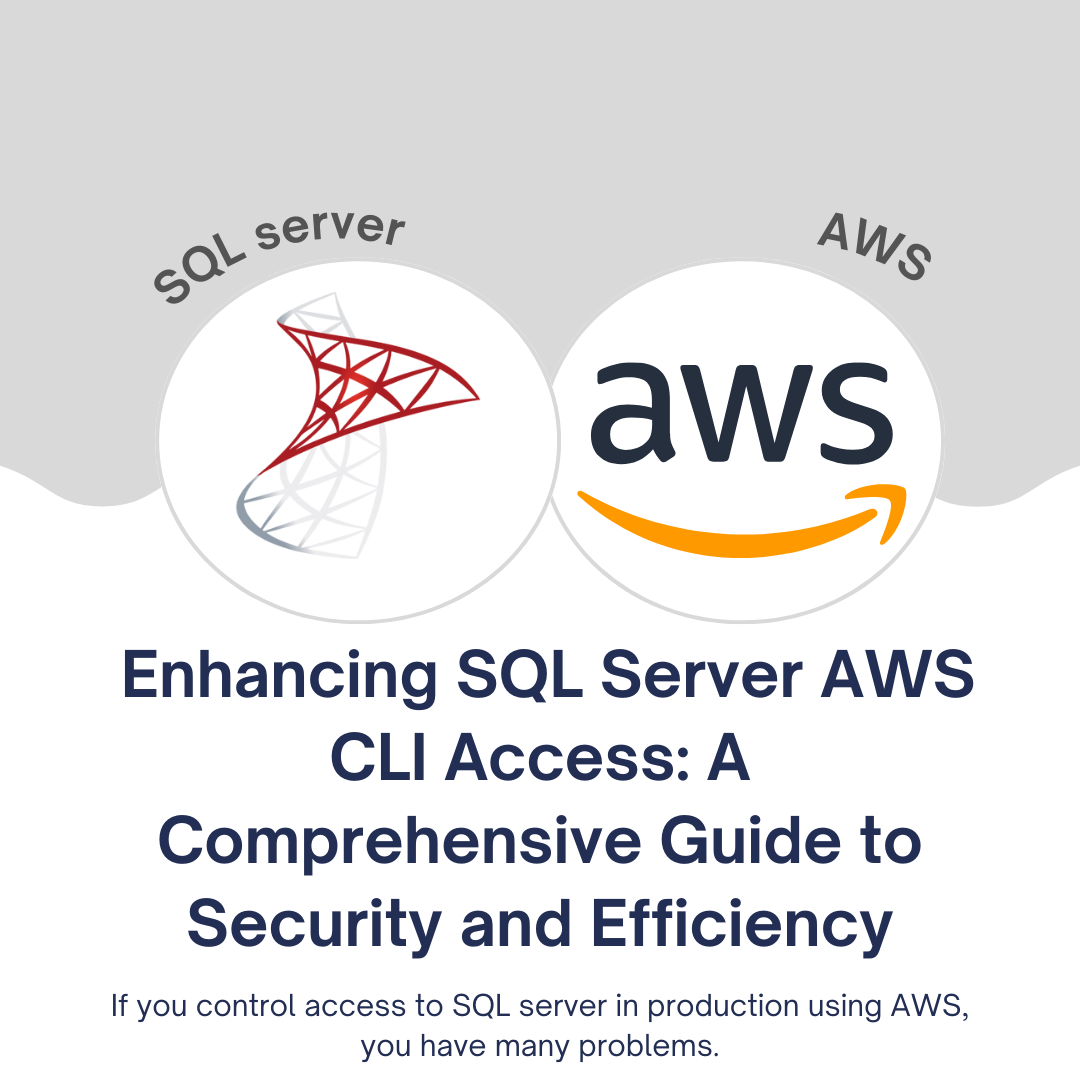Enhancing SQL Server AWS CLI Access: A Comprehensive Guide to Security and Efficiency

Introduction
In the fast-paced world of production environments, rapid access to SQL Server is crucial for maintaining product speed. Whether it's troubleshooting, bug fixes, or incident resolutions, the efficiency of these processes hinges on seamless data access. Unfortunately, many teams grapple with suboptimal solutions for granting access, inadvertently creating significant security risks or inefficient workflows. In this article, we will delve into the five major challenges that organizations face when controlling access to SQL Server through AWS CLI, their consequences, and practical steps to mitigate these issues.
1. Building Infrastructure for SQL Server Access with AWS CLI: A Painful Endeavor
One of the key issues in managing SQL Server access through AWS CLI is the arduous process of building the necessary infrastructure. Teams often find themselves grappling with various components required for robust access management. These missing components, though seldom discussed, are significant vulnerabilities that can lead to security breaches and operational inefficiencies. Let's take a closer look at them:
Hidden Vulnerabilities in SQL Server AWS CLI Access:
- Single Sign-On (SSO) & Multi-Factor Authentication (MFA): Lack of robust SSO and MFA integration can leave systems exposed to unauthorized access.
- Audit Trials and PII Protection: Inadequate audit trails and data protection measures can compromise sensitive information and regulatory compliance.
- Compliance Requirements: Meeting regulatory standards such as GDPR, PCI, SOC2, and HIPAA becomes challenging without the necessary access controls.
- Developer Experience: Neglecting developer experience can lead to productivity issues and hinder the adoption of secure access practices.
2. Implementing the 80/20 Rule: Gradual Enhancement of Features
To address these vulnerabilities effectively, organizations can adopt the 80/20 rule, focusing on solutions that provide the most significant impact with the least effort. Here's how to apply this principle:
Prioritize Access Features Relevant to Your Industry:
- Streamline Developer Experience: If your industry isn't heavily regulated, prioritize improving developer experience, SSO, and MFA integration to reduce access steps.
- Compliance-Centric Approach: In highly regulated industries like fintech, start with compliance requirements such as PCI and gradually enhance other access features.
By aligning your access strategy with industry needs, you can make access management more efficient and secure.
3. Leverage Unified Solutions for Access Management
Managing access across multiple tools and platforms can lead to complexity and inefficiency. Streamline your access management by adopting solutions that encompass a broader range of access needs:
Consolidate Access Management:
- Consider All Access Needs: Look for tools that cover not only SQL Server but also other databases, cloud providers, Kubernetes, servers, and more.
- Example: Runops: Many organizations benefit from using tools like Runops to manage various access needs within a single platform, despite limitations in user experience.
Sacrificing a slightly worse user experience for everything in one tool often outweighs managing multiple tools for each specific use case.
4. Adding Friction to Unwanted Access Methods
Addressing security issues related to rapid but insecure access methods is crucial. One method to encourage secure practices is to add friction to undesired access methods:
Discourage Unwanted Access Methods:
- Introduce Form Submissions: For the fastest yet insecure access methods, consider introducing form submissions, which incentivize users to adopt the ideal, more secure approach.
- Jira Requests: For tasks performed using the AWS web console instead of automated Infrastructure as Code (IaC) pipelines, put console access behind a Jira request to deter unwanted practices.
While adding complexity to insecure access methods may not be ideal, it can be an effective interim solution until you have the resources for a more robust approach.
Conclusion
Controlling access to SQL Server via AWS CLI presents numerous challenges, from security vulnerabilities to regulatory compliance and developer experience. However, by following the steps outlined above, organizations can navigate these challenges with a clear strategy that emphasizes security, efficiency, and ease of use. Strengthening SQL Server access management is not just about protecting your data; it's about optimizing your workflow and ensuring your team operates at peak efficiency in the demanding world of production environments.
